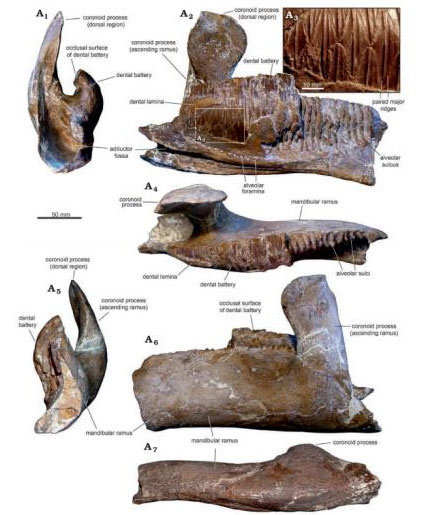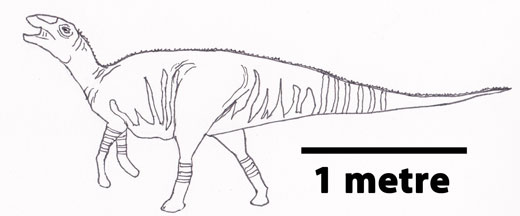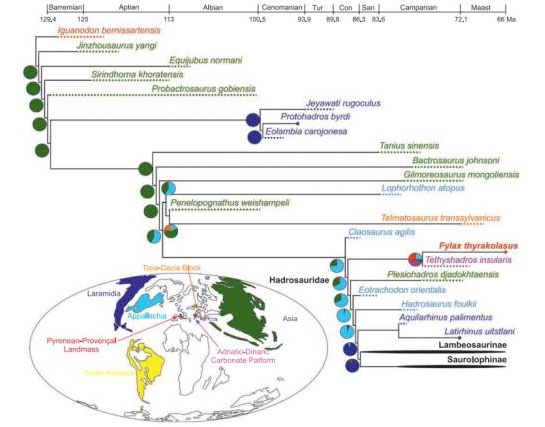Analysis of a beautifully preserved lower jawbone found in the southern Pyrenees of Spain has led to a new species of Late Cretaceous hadrosauroid dinosaur being erected. Named Fylax thyrakolasus (F. thyrakolasus), it is the youngest non-hadrosaurid hadrosauroid described to date. This dinosaur was one of the very last of all the non-avian dinosaurs to have existed and a phylogenetic assessment places Fylax as the sister taxon of Tethyshadros which is known from north-eastern Italy and was formally named and described in 2009.

Described from a Dentary
Described from a left dentary (lower jawbone), found in Lleida Province in Spain, the researchers from The Autonomous University of Barcelona (Universitat Autònoma de Barcelona), identified several unique characteristics that enabled them to erect a new taxon. The genus name is derived from the Greek thýra which means door or gate and kólasi which means hell. This translates as the “keeper of the gates of hell” a reference to the proximity of the fossil dentary to the layers of rock that mark the end Cretaceous mass extinction event that saw the demise of the non-avian dinosaurs.
Based on analysis of more complete hadrosaurid fossil remains, Fylax is estimated to have been between 3.5 to 4 metres in length and it is the stratigraphically youngest non-hadrosaurid hadrosauroid known to date.

Picture credit: Everything Dinosaur
An Asian Origin for Hadrosauroids
Although not the focus of their study, subsequent analysis and mapping of the geographical distribution of ornithopod fossil remains led the researchers to support the hypothesis of an Asian origin for hadrosauroids, which then subsequently dispersed to the eastern North American landmass of Appalachia. They suggest that the European archipelago that existed during the Late Cretaceous could have facilitated the westward dispersal of hadrosaurid outgroups from Asia to Appalachia.

The scientific paper: “A new late-surviving early diverging Ibero-Armorican duck-billed dinosaur and the role of the Late Cretaceous European Archipelago in hadrosauroid biogeography” by Prieto-Márquez, A. and Carrera Farias published in Acta Palaeontologica Polonica.
Visit the Everything Dinosaur website: Everything Dinosaur.






Leave A Comment